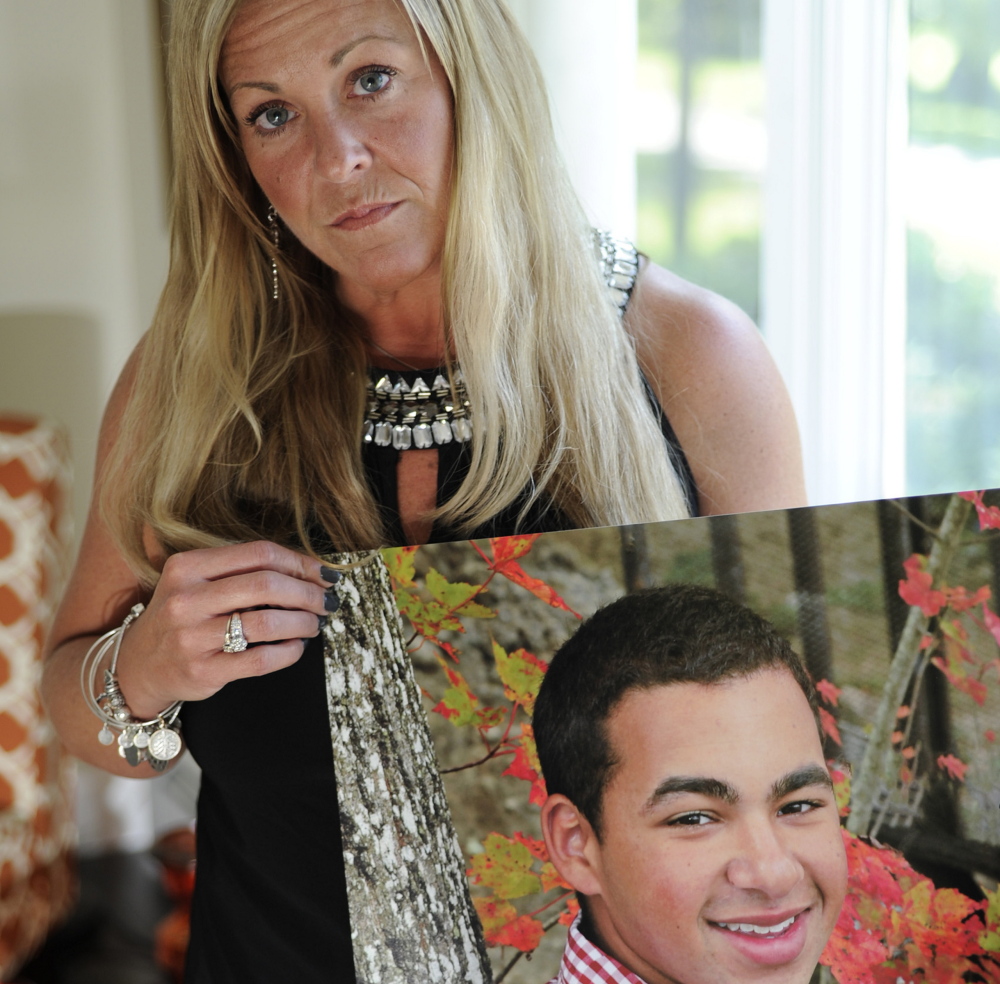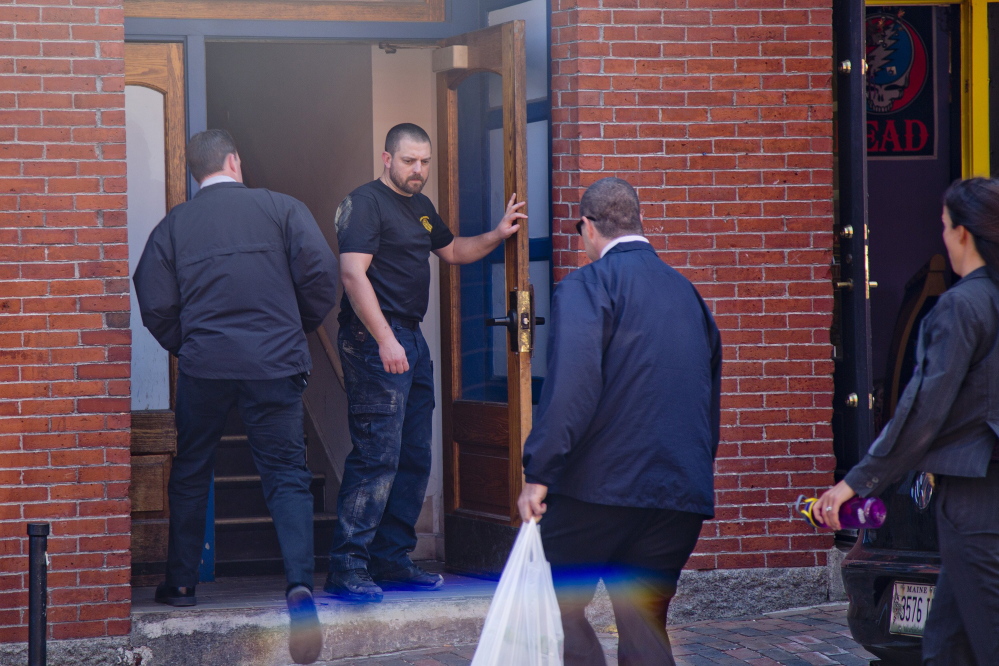Four weeks after the fatal shooting of a 19-year-old Westbrook man in Portland’s Old Port, police have yet to make an arrest or release many details about the investigation.
Trey Arsenault’s mother says police also have not briefed her on their progress, but she’s OK with that.
“I’m not frustrated at all because I know the police department is doing a very thorough job and I want it done right,” said Nancy Laxson, who lives in Scarborough. She said she hasn’t called them for updates because she wants detectives to concentrate on solving the case while she focuses on caring for her family.
“When they do find out whoever did this, I want it to stick,” she said.
Meanwhile, outside investigators and forensic experts say the lengthy investigation and the unusually long time police maintained control of the crime scene – 2½ weeks – doesn’t necessarily mean detectives aren’t closing in on a suspect, but it does mean there is a lot of investigative work involved.
“That’s a long time to keep a scene, but at the same time you have one chance to do it right,” said Kevin MacDonald, who teaches at Southern Maine Community College’s law enforcement program and is a former evidence technician with Portland. Holding the crime scene for that long could relate to the quantity and value of evidence being recovered – everything from fingerprints and shoe impressions to ballistics analysis of bullets and biological residue that might contain DNA, he said.
Arsenault was shot multiple times in the abdomen shortly before midnight on Memorial Day, May 25. He and between seven and 11 other people were at a rap recording studio, Da Block Studios, on the third floor of the building at the corner of Market and Fore streets.
A 20-year-old Portland man, whom police have not identified, also was shot, but his injuries were not life-threatening. Police initially had a difficult time interviewing him because he was on medication, but he has since been released from Maine Medical Center.
Police secured the recording studio immediately after the shooting, while evidence technicians gathered evidence and detectives tried to re-create the scene. That process can take time, especially in a large, somewhat public place. The studio covers most of the third floor of the building. There is also a vacant apartment on that floor.
“It was a large and complex crime scene and it is important the Portland Police Department thoroughly went through the entire crime scene,” said Deputy Attorney General Lisa Marchese.
“Nobody should take anything negative from the fact that four weeks ago there was a homicide and arrests have not been made,” she said. “I feel confident that we will find the person or people responsible for these shootings.”
‘HOLY GRAIL’ OF SWABBING
Evidence collection is a methodical, sometimes painstaking, process.
“Swabbing is the first thing that happens,” MacDonald said, referring to swabs taken from places like the rim of a glass, a beer can or a cigarette butt where officers might find cells that can yield a person’s unique DNA. “That’s become the holy grail.”
Fingerprints and shoe impressions also need to be gathered. Evidence technicians need to know the footwear officers and rescue workers wore, to separate them from ones that might be related to the crime. Technicians need to weed out the samples and impressions that are not evidence in the case.
Police also use alternative light sources, employing different frequencies of light to illuminate different types of evidence, as well as chemicals to enhance what might be missed.
“What might be invisible to the naked eye is more visible under different wavelengths,” said Lt. Donald Foss, head of investigations for the Cumberland County Sheriff’s Office. Trace amounts of blood give off a blue glow when sprayed with Luminol.
Locating spent shells and slugs can indicate the direction from which a shot was fired and even the type of gun used, though police would need to have the gun itself or a previously fired bullet to match it.
A homicide can tax the resources of a department and the amount of evidence collected can overwhelm a crime lab, so police have to be judicious in what they test.
Portland’s crime lab can develop and analyze fingerprints and run them through an in-house computer against previously identified criminals and suspects and previous crime scenes.
But more complex analysis, such as developing a DNA profile or ballistics mapping, has to be done at the Maine State Police Crime Lab in Augusta.
The forensic evidence can’t replace witness testimony, including those at the scene, but can be a good check on veracity and accuracy.
“That’s the beauty of physical evidence. It doesn’t know anybody. It’s not a friend of the suspect or the victim,” MacDonald said.
Once the evidence technicians have completed their initial processing, detectives might want to walk witnesses through the scene to have them explain where people were during the crime.
Acting Police Chief Vern Malloch has released no new details about the case, but he did say that walking witnesses through the crime scene takes time. Witnesses can be key to solving and prosecuting a case, but not always. Some witnesses lie and others are mistaken.
CHANNELING HER GRIEF
Laxson said she has been overwhelmed with support from Arsenault’s friends, the community and her employer, Maine Medical Center, where she works as a nurse care manager. Co-workers donated their own vacation time so she could take two months of paid time off.
Since her son’s death, Laxson said she has been channeling her grief into projects to benefit young people.
Laxson created a Treyjon Arsenault Memorial Scholarship, giving the first scholarship to his friend Derek Breunig, who is headed to Maine Maritime Academy in Castine. She is also creating a loan locker for youth football equipment, so children who can’t afford athletic gear will still be able to play the sport her own son loved.
She also spoke at a fundraiser held immediately after her son’s death, urging those in attendance not to respond to Trey’s death with violence.
The people responsible “are human beings and they have families and I don’t want their families to go through what I have been going through and will be going through,” she said.
“My way of healing is to find forgiveness for the people who did this to my son. Don’t get me wrong. I break down daily. There hasn’t been a day I have not.”
Send questions/comments to the editors.




Success. Please wait for the page to reload. If the page does not reload within 5 seconds, please refresh the page.
Enter your email and password to access comments.
Hi, to comment on stories you must . This profile is in addition to your subscription and website login.
Already have a commenting profile? .
Invalid username/password.
Please check your email to confirm and complete your registration.
Only subscribers are eligible to post comments. Please subscribe or login first for digital access. Here’s why.
Use the form below to reset your password. When you've submitted your account email, we will send an email with a reset code.